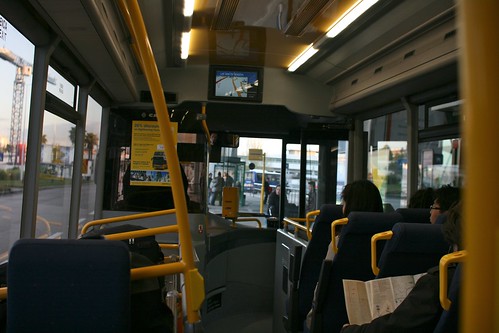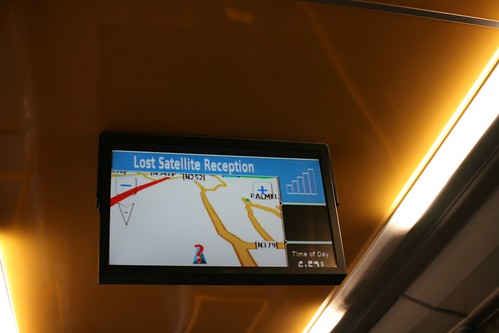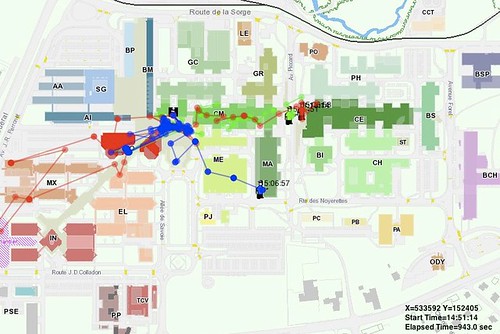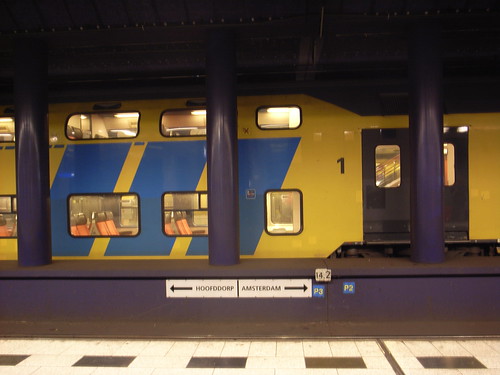Looking at the webosphere, it's funny how certain topics appear to be new and shiny when they exist for quite a while. The notion of "ambient awareness" is one of these terms that you hear here and there as if it was brand new. It generally refers to the possibility to stay tuned with what your contacts/social network is doing, will do or think. A social radar of some sort, enabled by microblogging platforms such as Twitter or Jaiku (or Facebook status). What's intriguing is that the whole discourse about these services neglect the large array of research about "awareness". In the last twenty years, authors such as Paul Dourish, Saul Greenberg or Thomas Erickson have produced a lot of material, studies, guidelines, theories and recommendations about this. In this blogpost, I wanted to get back to this issue since it's important to describe what has been done in the past about it, before looking at the Twitter example.
A brief recap of the research about Awareness
All started in a research domain called "Computer-Supported Collaborative Work", the branch of Human-Computer Interaction which looks as how technologies can support and enrich collaboration practices. Now this field is more and more concerned by other contexts than work (such as education or games) so we can perhaps use the term "social computing" to make it broader. The last twenty years of research in this field acknowledges the relationship between collaboration "efficiency" and the visibility of group members’ activities across time and space; namely enabling what has been called awareness by the research community (see for example Dourish and Bellotti, 1992, Dourish and Bly, 1992; Gutwin et al., 1995, Erickson and Kellogg, 2000).
Historically, the notion of awareness has been drawn from two domains. On one hand, it emerged from field studies of collaborative work in co-present work settings (Heath, & Luff, 1992; Heath and Hindmarsh, 2000), which focus on how workers systematically coordinate their activities by relying on changes in the local context as well as on their partners visible contributions. In this context, awareness is seen as the ‘mutual visibility’ of each other’s actions, conveyed by the continuous broadcast of information generated during the course of action. Of course, as Heath and Luff (1992) point out, this mutual visibility/observability of actions relies on the active practice of team members who make their own actions ‘visible/observable’ to the others. On the other hand, the notion of Awareness appeared in computer science, as a concept relevant to design collaborative technologies (Dourish and Belloti, 1992; Gutwin et al, 1995; Erickson and Kellogg 2000; Gutwin and Greenberg, 2002). As opposed to the richness of a copresent situation, geographically dispersed collaboration engages participants in joint activities with a low visibility of each partner’s contribution to the main goal of the group. This is why ‘awareness interfaces’ or ‘awareness tools’ have been designed to convey more visibility, showing group members representation and actions.
As stated by Schmidt (2002), the term awareness is highly equivocal in the sense that it is used in a lot of different ways and is often qualified by many adjectives like ‘general awareness’ (Gaver, 1991), ‘workspace awareness’ (Gutwin and Greenberg, 2002) or ‘informal’ or ‘passive’ awareness’ (Dourish and Belloti, 1992). Definitions indeed range from knowing who is present in the environment to the visibility of others’ actions (Heath and Luff, 1992). These limits, however, did not prevent the CSCW community from using the ‘awareness’ concept as the starting point for many original and innovative collaborative technologies. In this thesis, we will not enter into this debate about setting a proper definition but instead focus only on the awareness of people’s location in a shared environment, be it physical or virtual.
Even though awareness is a broad and blurry concept, in the epistemological sense, there are some recurrent definitions set by scholars. Among all the terms that are used in conjunction with this notion of awareness, the one that has received the most important attention is certainly the “workspace awareness” that Gutwin and Greenberg (2002) describe as “the up-to-the-moment understanding of another person’s interaction with the shared workspace” (Gutwin & Greenberg, 2002). More precisely, according to these authors, awareness refers to the perception of changes that occur in the shared environment. These authors also highlight that awareness is part of an activity, such as completing a task or working on something. The main objective of awareness is not only to perceive information but also to recognize the contextual elements required to carry out a joint activity. This is what Dourish and Belloti expresses by saying that awareness corresponds to: “an understanding of the activities of others, which provides a context for your own activity” (Dourish and Bly, 1992, p.107). These definitions emphasize the idea that awareness is meant to enrich the
context of collaboration; they also implicitly state that maintaining awareness is not the purpose of an activity but instead a basis for completing the task.
Types of Awareness and usage
Starting from the previously described definitions of awareness, Gutwin and Greenberg (2002) differentiated the core components of awareness according to simple questions such as “Who, What Where, When”. According to these authors, awareness can be described in terms of the period of time it covers, conveying information about the present state of the environment (“synchronous awareness”) and or about past occurrences of events (“asynchronous awareness”), which corresponds to the “When” question.
So, to some extent:
- the "who" question corresponds to notification tools which enables to know who is contacted on your IM client.
- the "where" question corresponds to location-based services as they allow the user to be aware of his or her's contacts whereabouts.
- and so on.
Knowing what others are doing or where they are located can be useful for various reasons: simplification of communication, help people to coordinate, supports inferences regarding the partners’ intentions, know if a partner/colleague/friend needs help or just to get a vague feeling of presence (belonging to a community of friends, family...).
Awareness and Twitter
Time for more recent applications. In her paper called "The Translucence of Twitter" presented at EPIC 2008, Ingrid Erickson examines Twitter in conjunction with the aforementioned theories about awareness and visibility. The paper is a field study which examines the use of Twitter and conclude "there are certain obvious ways that Twitter showcases people’s thoughts and behaviors, but less obvious ways in which interlocutors signal their awareness of being noticed. ". The author compares the notion of Awareness as described in the work of Erickson and Kellogg (about "social translucence") and Twitter usage to show the discrepancies and alternate means of establishing awareness:
"Indirect Awareness: awareness can be evoked via Twitter, just not always in a direct manner. (...) Twitter here is a visible trigger for a host of possible awareness-oriented response mechanisms, from the completion of a work task to a physical meet up to a phone call. (...) receives a phone call because of a Twitter post he makes, this act raises his awareness that his messages are not falling on deaf ears. In turn, he is less inclined to falsify or make irresponsible posts in subsequent communications.
(...)
Awareness by Incident: Microblogging during a critical incident, such as inclement weather, appears to bring together individuals across community levels (i.e., perceived close and extended) out of a common need for timely information exchange. (...) Within this critical incident, Twitter became a real-time forum to make reports from respective outposts both to signal well being and to check in with others, despite varying levels of intimacy."
Why do I blog this? I am trying to sort out some ideas about microblogging platforms and theories about Awareness. Of course, one of the underlying theme I am interested in refer to mutual-location awareness and how tools such as Twitter and Jaiku engage people in new ways to discuss spatial issues.

 The picture above shows the difference between asking where someone is with an SMS and getting this information automatically with a location-based software such as Aka-Aki. This was a big debate few years ago. A more recent debate concerns the manual check-in versus automatic positioning with mobile social software.
The picture above shows the difference between asking where someone is with an SMS and getting this information automatically with a location-based software such as Aka-Aki. This was a big debate few years ago. A more recent debate concerns the manual check-in versus automatic positioning with mobile social software.




 Making an "Earth sandwich" is a curious practice found in
Making an "Earth sandwich" is a curious practice found in  "
"













